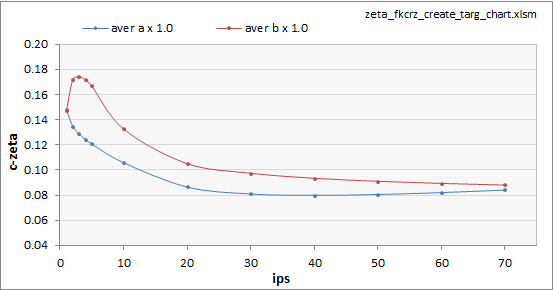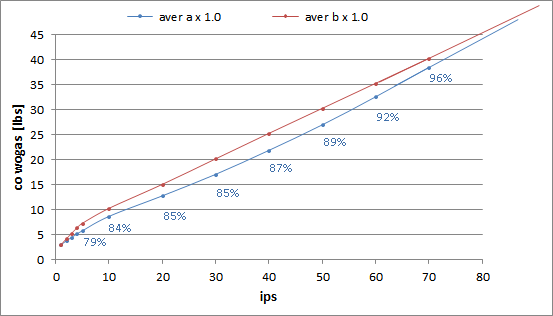- Compression zeta (c-zeta) is used to create target damping curves for both bv and mv compression force.
- The bv and mv force is reverse engineered from the curve, then 2 lbs of target drag is added.
- This = co wogas [target].
- There are currently three c-zeta damping curves. We simply call them 'a', 'b', 'c'.
- Curve
'a' (blue) is from (3253)f 4CS fork.
This fork works extremely well.
- 'a' has less low speed compression damping.
- Notice c-zeta increases starting at 40ips. This is from the 4CS small mv piston.
- Based on 3252, which is (f1+f2)/2, which is tests (3210+3211)/2.
- Curve 'b' (red) is for all other DFF or SFF.
- 'b' has more low speed comp damping.
- Notice c-zeta continues to decrease after 40ips. This is because the KYB mv piston and rod diameter are proportioned different than the 4CS. It is assumed the KYB design to be better.
- Based on (2052) 15y250 and (2151) 13yz250.
|
- The main purpose of showing the c-zeta curves (below) is not to see what the curve looks like, but rather what it produces.
- Consider changing the graph and showing co wogas.
- The graphs are nothing more than a visual representation showing the differences in compression force.
|
- For the graph below, c-zeta starts the same at 1ips.
- This means both curves will produce the same bv and mv force at 1ips.
- The red curve then goes on to produce higher forces.
- The curves meet each other at about 80ips.
|
 |
 |

